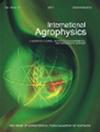Fractions of nitrogen (including 15N) and also carbon in the soil as affected by different crop residues
IF 1.7
4区 农林科学
Q2 AGRONOMY
引用次数: 0
Abstract
. Returning crop residue can increase soil organic matter content, and residue quality has an influence over the rate of their turnover. However, there is a lack of information con - cerning the biochemical transformations of organic compounds of N and C present in the crop residues during subsequent crop growth. In this study, the contents of organic N and C fractions in soils obtained using acid and alkaline hydrolysis under two crop rotations (faba bean vs . wheat rotation) were investigated. Black fallow served as a control. The mean total N increased in the order: black fallow, wheat rotation, faba bean rotation, total C and SOM were higher in the cropped soils than in black fal - low. Hydrolysable-N (1-step acid hydrolysis) reached 83.7% total N, amino acid-N and threonine+serine-N were the highest in faba bean rotation and the lowest in black fallow, ammonia-N and aminosugar-N were lower in black fallow than in cropped soils. Hydrolysable-N (2-step sequential fractionation) reached 85.3% total N and significant differ ences were noted between the cropped soils and black fallow, with respect to both the N and C contents. 15 N was mainly accumulated in the N soluble and eas - ily hydrolysable N compounds, and these fractions were greater in cropped soils than in black fallow. N in the humic com pounds increased from black fallow to faba bean rotation. A PCA analysis showed that crop rotation and soil sampling terms had a substan - tial influence over cluster formation. An ANOSIM test revealed significant diff erences between the crop rotation and term treat - ments. The results indicated that soil with faba bean rotation is richer in N compounds than soil with wheat as a forecrop and this may result in a reduction in N fertilizers for the succeeding crop.不同作物残留物对土壤中氮(包括15N)和碳的影响
作物秸秆还田可提高土壤有机质含量,秸秆质量对其周转率有影响。然而,在随后的作物生长过程中,缺乏关于作物残留物中N和C有机化合物的生物化学转化的信息。在本研究中,研究了在两种作物轮作(蚕豆轮作和小麦轮作)下,通过酸和碱水解获得的土壤中有机N和C组分的含量。黑色休耕地起到了控制作用。平均总氮的增加顺序为:黑色休耕、小麦轮作、蚕豆轮作、总碳和SOM在种植土壤中高于黑色休耕土壤。水解态氮(一步酸水解)总氮含量达83.7%,氨基酸态氮和苏氨酸+丝氨酸态氮在蚕豆轮作期最高,在黑色休耕期最低,氨态氮和氨基糖态氮在黑色休闲期低于种植土壤。水解态氮(两步连续分级)达到总氮的85.3%,在N和C含量方面,作物土壤和黑色休耕土壤之间存在显著差异。15N主要积累在N可溶性和易水解的N化合物中,这些组分在作物土壤中比在黑色休耕土壤中更高。从黑色休耕到蚕豆轮作,腐殖酸中的N含量增加。主成分分析表明,作物轮作和土壤采样项对聚类的形成有重要影响。ANOSIM测试显示,轮作和长期处理之间存在显著差异。结果表明,蚕豆轮作的土壤比小麦轮作的土壤更富含氮化合物,这可能导致后续作物的氮肥减少。
本文章由计算机程序翻译,如有差异,请以英文原文为准。
求助全文
约1分钟内获得全文
求助全文
来源期刊

International Agrophysics
农林科学-农艺学
CiteScore
3.60
自引率
9.10%
发文量
27
审稿时长
3 months
期刊介绍:
The journal is focused on the soil-plant-atmosphere system. The journal publishes original research and review papers on any subject regarding soil, plant and atmosphere and the interface in between. Manuscripts on postharvest processing and quality of crops are also welcomed.
Particularly the journal is focused on the following areas:
implications of agricultural land use, soil management and climate change on production of biomass and renewable energy, soil structure, cycling of carbon, water, heat and nutrients, biota, greenhouse gases and environment,
soil-plant-atmosphere continuum and ways of its regulation to increase efficiency of water, energy and chemicals in agriculture,
postharvest management and processing of agricultural and horticultural products in relation to food quality and safety,
mathematical modeling of physical processes affecting environment quality, plant production and postharvest processing,
advances in sensors and communication devices to measure and collect information about physical conditions in agricultural and natural environments.
Papers accepted in the International Agrophysics should reveal substantial novelty and include thoughtful physical, biological and chemical interpretation and accurate description of the methods used.
All manuscripts are initially checked on topic suitability and linguistic quality.
 求助内容:
求助内容: 应助结果提醒方式:
应助结果提醒方式:


